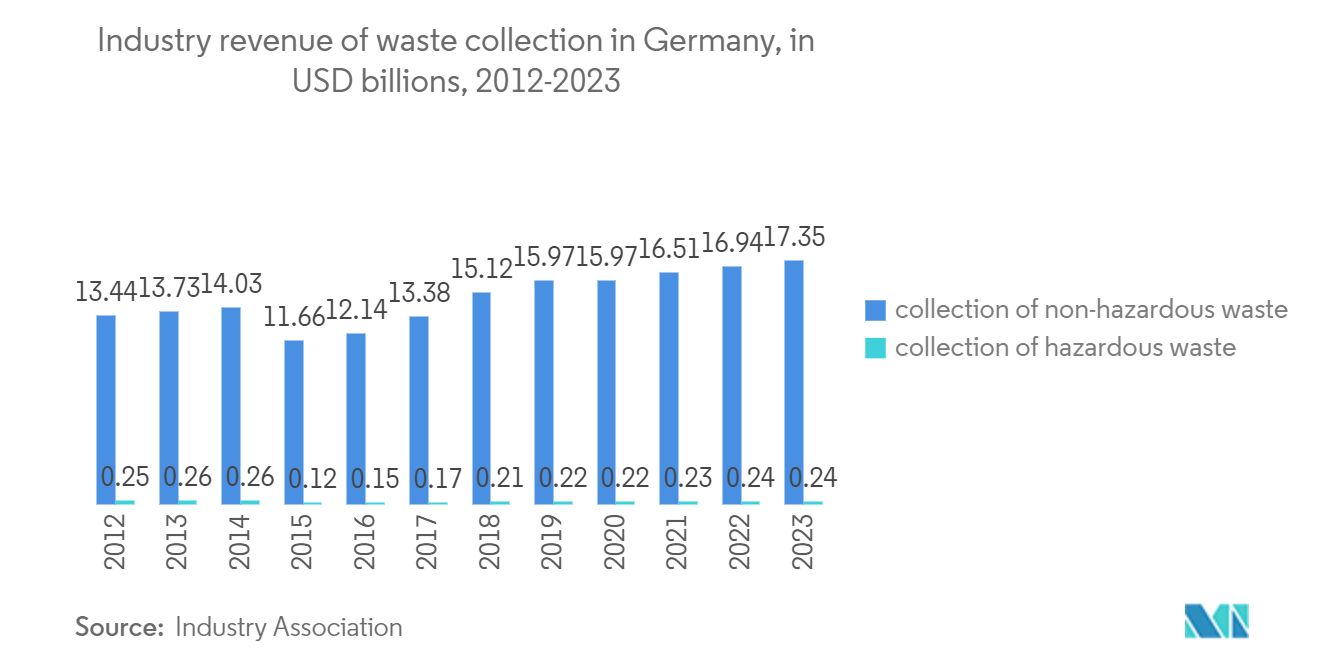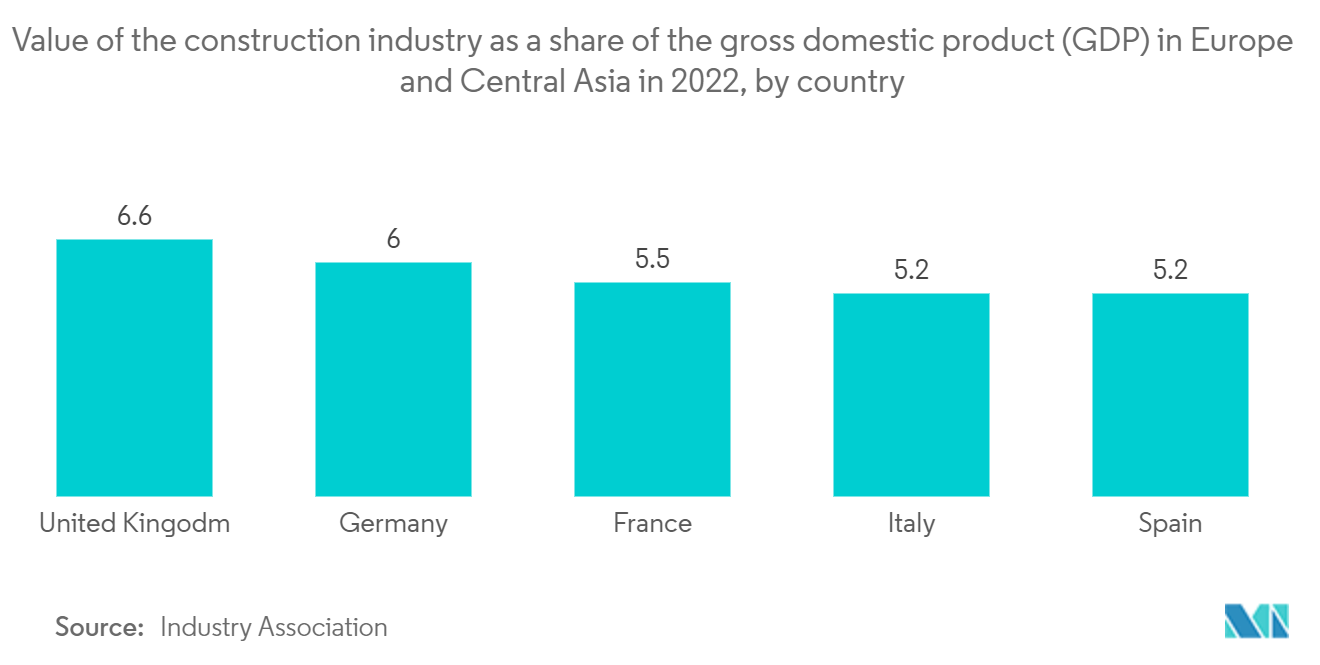Market Trends of Europe Industrial Waste Management Industry
Germany Leads the Highest Contribution in the Waste Generation
- Several sectors, such as manufacturing, construction, and healthcare, have a high level of waste production. The manufacturing sector is responsible for the production of different types of waste, e.g., chemical waste, packaging waste, and electronics waste. The large-scale production of goods and the use of chemicals and raw materials in manufacturing processes are reasons for this.
- Around 340 million tonnes of waste are produced each year. Construction and demolition waste, which can be reused for building measures, is the vast majority of that waste, i.e., approximately two-thirds of the total. The recycling of 50 million tonnes of municipal waste is carried out each year.
- Since the EU Battery Directive entered into force in 2006, the separate collection and recycling of all batteries has been mandatory in the EU member states. A collection rate of 45% has been applied in all EU member states since 2016. Every year, more than 60,000 tonnes of portable batteries and accumulators are placed on the market in Germany.
- Although the amount of portable batteries sold continues to increase every year, Germany consistently complies with the applicable EU-wide collection provisions. Containers for waste portable batteries are available in shops and at municipal collection points. Automotive and industrial batteries are also collected and consigned to recycling.
- Mineral waste is the largest waste stream in Germany, amounting to an annual volume of more than 275 million tonnes, as well as construction and demolition waste and excavated soil, which includes slag and ash from incineration processes in the energy and metals industries. Mineral waste holds enormous potential for recycling. Around 90% of mineral waste can currently be recovered.

Construction and Demolition Segment Occupying the Largest Market Share
- The construction and demolition (C&D) waste in Europe has witnessed significant growth in recent years due to rapid urbanization, construction activities, and stringent regulations promoting sustainable waste management practices. Construction and demolition waste accounts for more than one-third of the total waste generated in the European Union. C&D waste includes a wide variety of waste materials such as concrete, bricks, wood, glass, metals, and plastic. It includes all the waste produced by the construction and demolition of buildings and infrastructure, as well as road planning and maintenance.
- In the EU, the level of recycling and material recovery of construction and demolition waste varies widely, ranging from less than 10% to more than 90%. The different definitions of construction and demolition waste applied by EU countries make it difficult to compare them across borders.
- According to the news released by the European Union in March 2023, the waste generated by construction and demolition activities in the European Union (EU-27) in 2020 amounted to well over 37% of all waste. Since 2012, when the construction industry accounted for 32.5% of all waste, this percentage has increased. However, in 2018, the recovery rate of construction and demolition waste was more than 90% for most EU countries.

